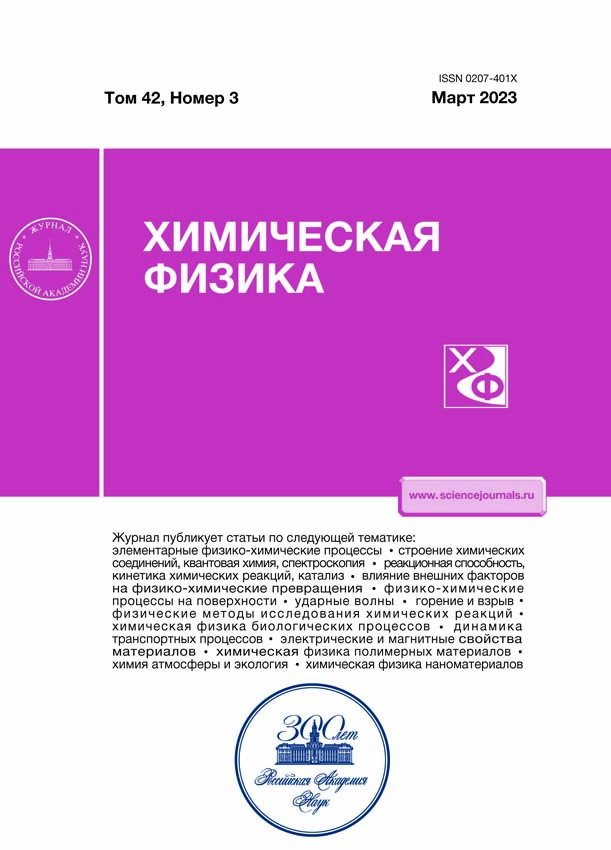On Initial Stage of Combustion of Acetylene–Oxygen Mixtures in a Tube
- Authors: Krivosheyev P.N.1, Penyazkov O.G.1
-
Affiliations:
- Luikov Heat and Mass Transfer Institute, National Academy of Sciences of Belarus, Minsk, Belarus
- Issue: Vol 42, No 3 (2023)
- Pages: 30-35
- Section: Combustion, explosion and shock waves
- URL: https://cardiosomatics.ru/0207-401X/article/view/674888
- DOI: https://doi.org/10.31857/S0207401X23030093
- EDN: https://elibrary.ru/LYNDWQ
- ID: 674888
Cite item
Abstract
Experimental study of the process of combustion of a premixed acetylene–oxygen mixture diluted with either nitrogen or argon in a circular cross-section tube is conducted by high-speed photography. The behaviour of flame front at the early stage of acceleration is identified. The experimental findings are compared with the theoretical models available in the literature. It is demonstrated that at the initial stage of the accelerated propagation of flame extended along the channel walls—until deceleration—the velocity of the leading tip of the front is effectively described by the exponential relationship proposed in (Clanet and Searby, 1996). The normal (laminar) burning velocity of the stoichiometric acetylene–oxygen mixture diluted with either nitrogen or argon at a reduced initial pressure (8–21 kPa) is identified.
About the authors
P. N. Krivosheyev
Luikov Heat and Mass Transfer Institute, National Academy of Sciences of Belarus, Minsk, Belarus
Email: krivosheyev.pavlik@gmail.com
Беларусь, Минск
O. G. Penyazkov
Luikov Heat and Mass Transfer Institute, National Academy of Sciences of Belarus, Minsk, Belarus
Author for correspondence.
Email: krivosheyev.pavlik@gmail.com
Беларусь, Минск
References
- Clanet C., Searby G. // Combust. and Flame. 1996. V. 105. P. 225.
- Valiev D., Akkerman V., Kuznetsov M. et al. // Ibid. 2013. V. 160. № 1. P. 97.
- Ballossier Y., Virot F., Melguizo-Gavilanes J. // Shock Waves. 2021. V. 31. № 4. P. 307.
- Кривошеев П.Н., Новицкий А.О., Пенязьков О.Г. // Хим. физика. 2022. Т. 41. № 8. С. 38.
- Smith G.P., Golden D.M., Frenklach M. et al.; http://combustion.berkeley.edu/gri-mech/
- Киверин А.Д., Тюрнин А.В., Яковенко И.С. // Хим. физика. 2021. Т. 40. № 12. С. 18.
- Ivanov M.F., Kiverin A.D., Yakovenko I.S. et al. // Intern. J. Hydrogen Energy. 2013. V. 38. P. 16427.
- Krivosheyev P., Penyazkov O., Sakalou A. // Combust. and Flame. 2020. V. 216. P. 146.
- Киверин А.Д., Смыгалина А.Е., Яковенко И.С. // Хим. физика. 2020. Т. 39. № 8. С. 9.
- Liberman M.A., Chukalovsky A.A., Rakhimova T.V., Ivanov M.F., Kiverin A.D. et al. // Acta Astronaut. 2010. V. 67. № 7–8. P. 688.
Supplementary files














